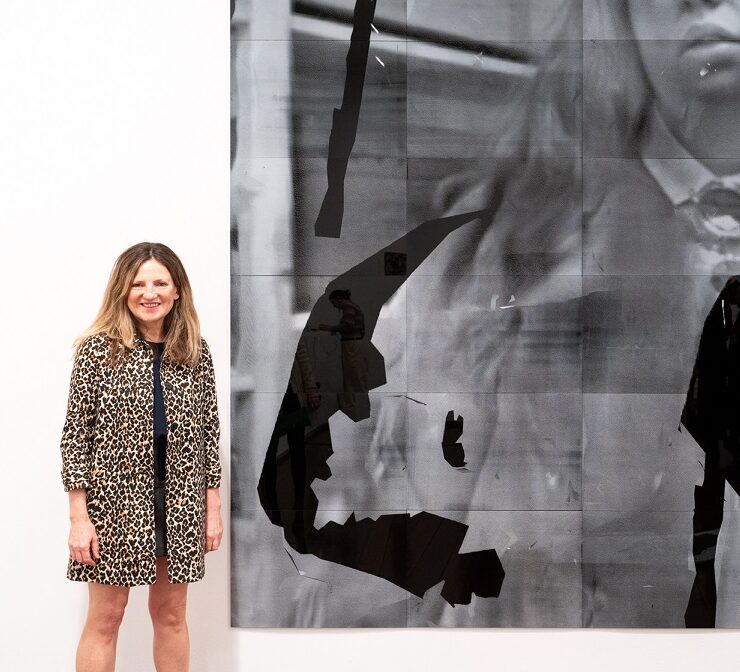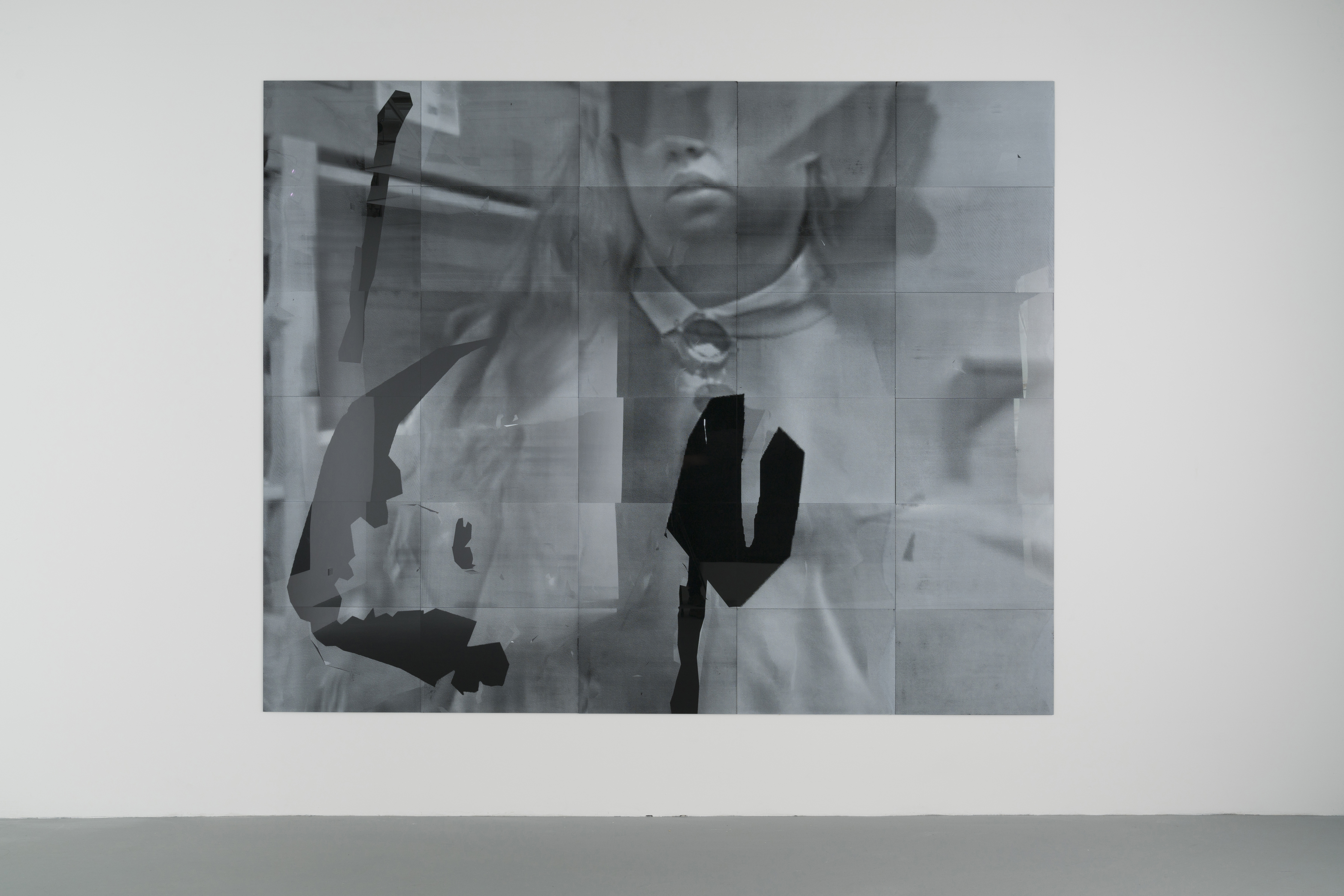
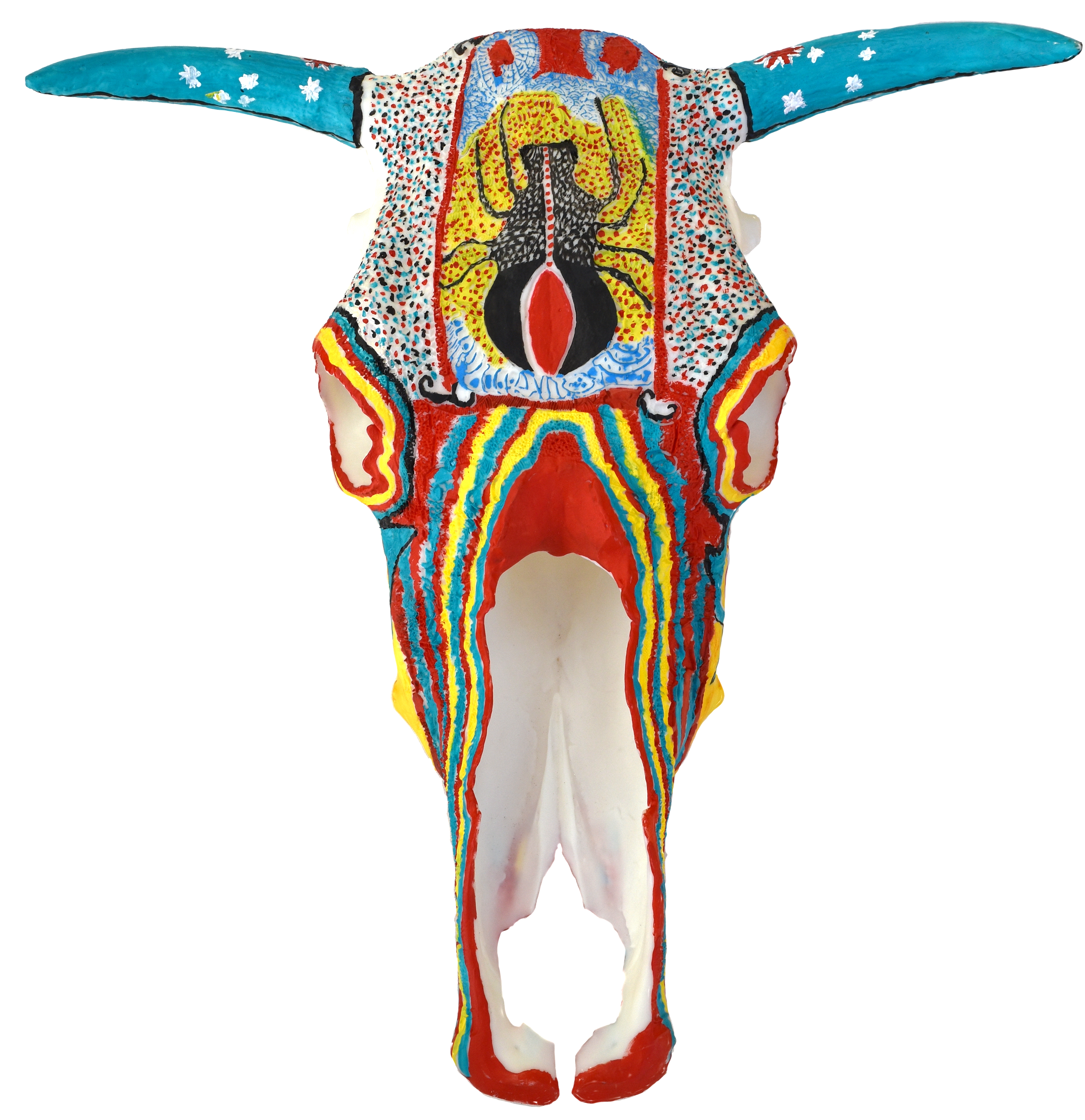

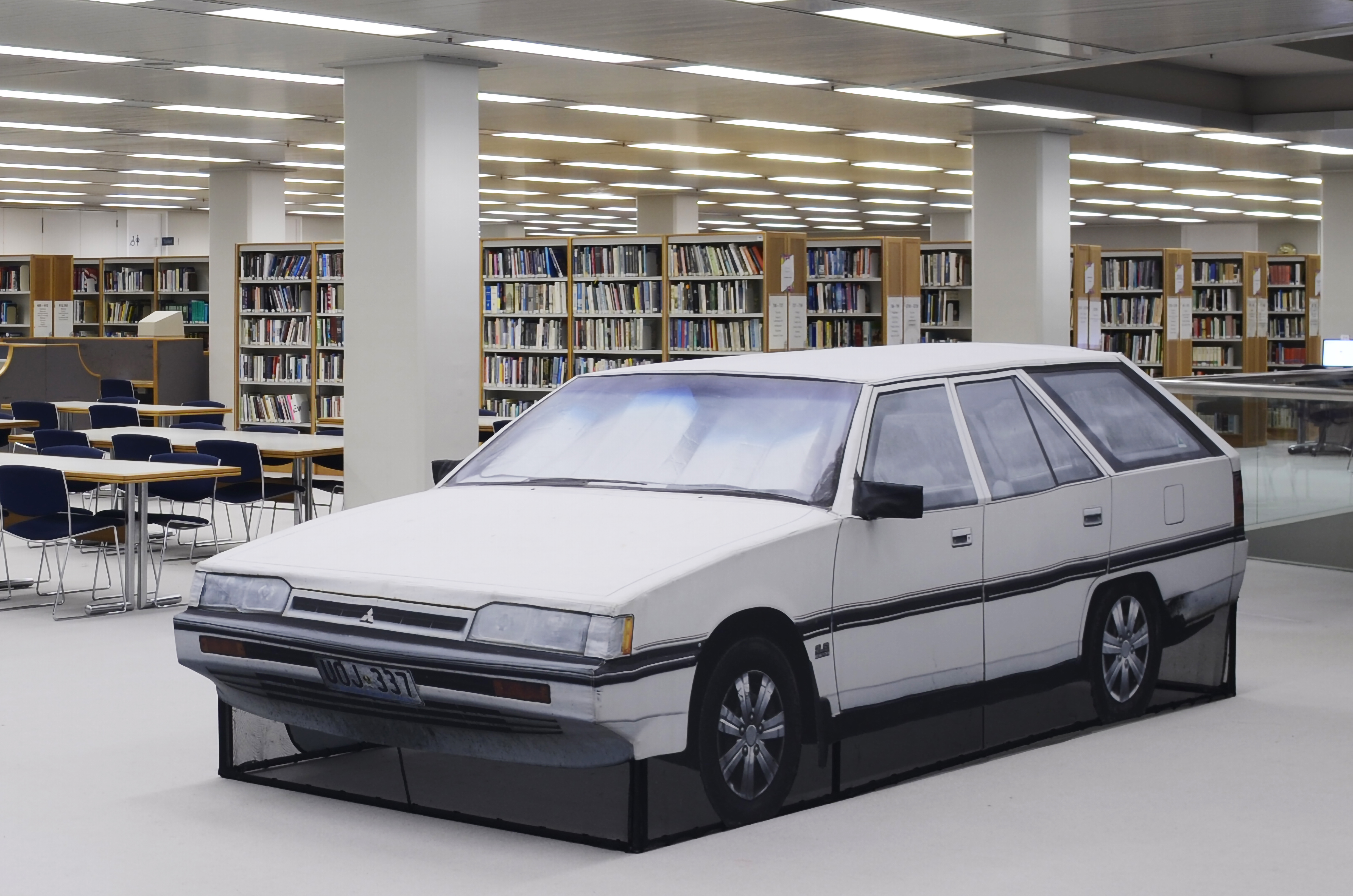
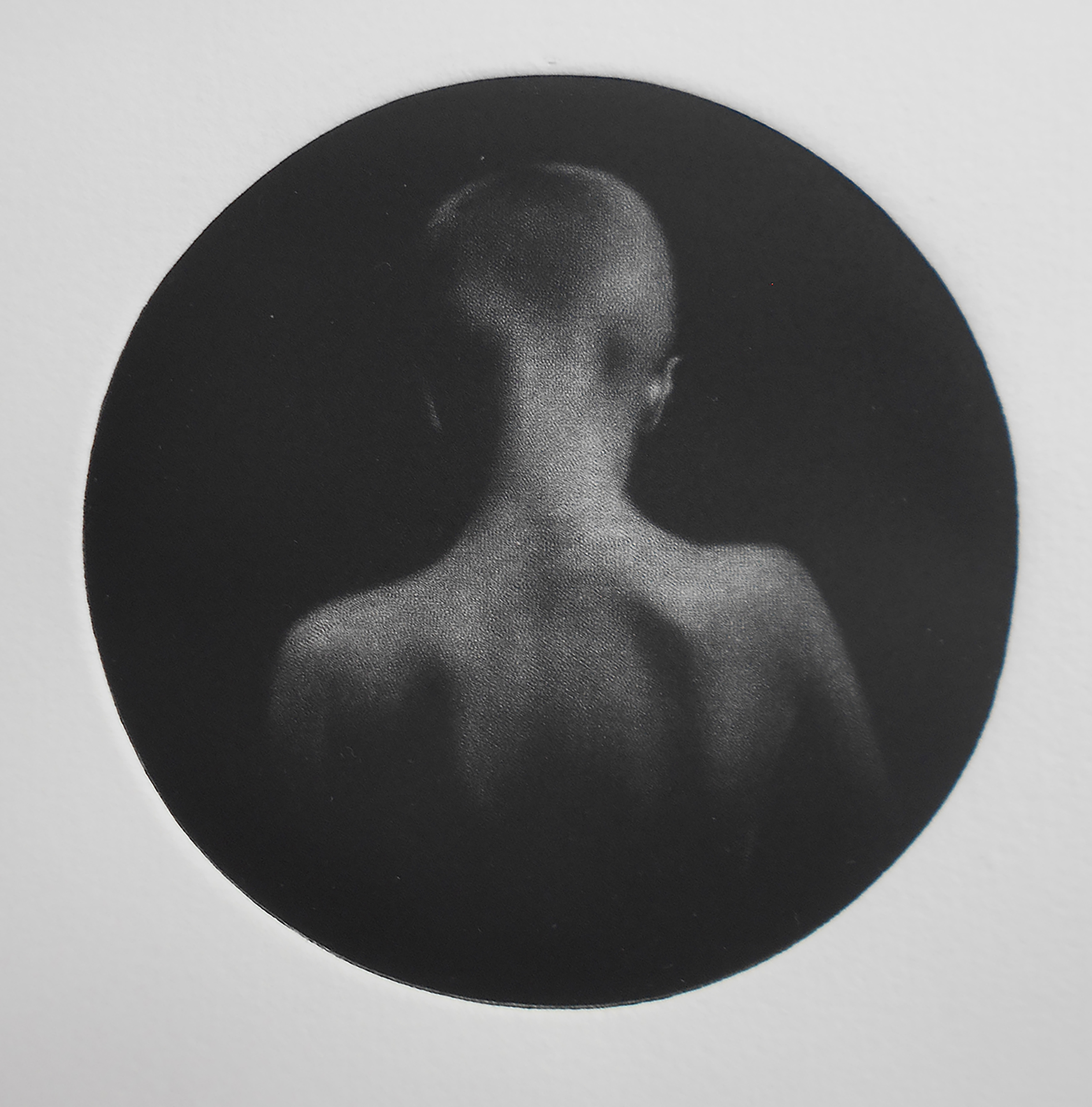
From top:
Alison Kennedy at the 45th FAC Print Award opening with her work ICU, 2019. Photography by Pixel Poetry
Alison Kennedy ICU, 2019, 240 x 300 cm, white ink screenprint on 30 high impact polystyrene panel 1/1
John Prince Siddon Purlkartu (Spider), 2020, 20 x 50 x 50 cm, acrylic paint on 3D print, ABS plastic resin, 1/5, printed by Heads 3D
John Prince Siddon with his work Purlkartu (Spider), 2020, which was awarded second prize at the 45th FAC Print Award. Photography by Pixel Poetry.
Dan McCabe, Shadows on the hill, 2016-ongoing, digital photographic print on synthetic fabric, 140 x 164 x 450 cm
Cleo Wilkinson, Then IV, 2020, Mezzotint Print, 37 x 27 x 0 cm
Q: Can you outline some highlights of the 45th Fremantle Arts Centre Print Award?
A: This year marks the 45th Fremantle Arts Centre Print Award, Australia’s longest running and richest print prize. The winning work, Alison Kennedy’s ICU, is an epic self-portrait rendered in bitmap detail, and screenprinted onto a sleek reflective black surface allows the viewer to see the artist and see themselves in the same breath, becoming entangled and complicit in the discussion the work unfolds. Taking second place is John Prince Siddon’s work Purlkartu (Spider), a brave new foray into technologically assisted printmaking, grounded though by his irresistible painterly style.
Beth Ferialdi’s heart-warming I’ve Been Meaning to Give You These, for me nostalgically recalls a teenage me singing along to my radio and patiently recording my favourite songs onto tape cassette. Cleo Wilkinson’s mezzotint is breathtaking in its attention to detail and Dan McCabe’s Shadows on the Hill performs as both shelter, monument and camouflage, and is designed to bring people together in conversation. For Pip Lewi and Paul Sutherland, their work was completed living together, charting the lines of repair cast in bitumen to the asphalt roads surrounding their home. It is a document of a place lived and explored together.
Q: How did the artwork selection take place?
A: Continuing in its engagement with the national conversation surround print making, the Fremantle Arts Centre invited a panel of industry professionals from across Australia to select works from a pool of 262 entries.
This year’s guest judges were: Felicity Johnston: Curator and Director of Art Collective WA; Lia McKnight: Australian artist and curator based in Walyalup/ Fremantle, Collection Manager of the Curtin University Art Collection and previous exhibiting artist at Fremantle Art Centre; and Rachel Salmon-Lomas: Printmaking lecturer and technician at Curtin University, WA and previous Fremantle Arts Centre Print Award finalist.
Our panellists completed two rounds of judging in February and April, with the first stage happening online and the next taking place at the WA Maritime Museum with all 51 finalist works laid flat. From the 262 works they selected 51 finalists, then a winner, runner up and four highly commended artists, representing a cross-section of contemporaneous Australian printmaking.
Q: How does the exhibition manifest – what do visitors experience?
A: This year the award is filled to the brim with works of immense scale as well as smaller more intimate works that require quieter moments of contemplation. There is a lot of work that feels meditative, slowly marking time spent by artists in lockdown at home in studios. The exhibition meanders over two gallery spaces and two large adjacent hallways at the Fremantle Arts Centre, featuring object-based works on plinths, others screen printed directly onto the wall or sprawling across the wall and floor at a 90-degree angle. This award takes up space, in more ways than one. With more than 50 artworks varying in scale, medium and thematic approach, the exhibition is a rich and staggeringly diverse showcase of artists and works. One thing I really love each year about the print award is diversity of lived experience of the artists involved. There are artists from regional Australia, urban centres, work from renowned senior practitioners to recent graduates. Each work demonstrates the breadth of quality of print medium and the skill required by artists to undertake it.
Q: Can you outline the diversity of entries and some of the subject matter they deal with?
A: There’s been a long wait to hold this exhibition, with the 2020 edition cancelled due to COVID. With so much time spent at home, in studios, spending charged moments looking inward – the 51 finalist works unsurprisingly reference ideas of isolation, community, belonging, contemporary spirituality and homelessness, often reflecting on the sober, indeterminate mood of the outside world.
As with previous years, the generous and varied selection of works include traditional printmaking, digital and new media, artist books and artworks made from found or discarded materials, offering a true picture of the state of contemporary Australian printmaking.
Q: What is it about the printmaking medium that is conveyed to audiences through the awards?
A: As in previous years, the printmaking in this award evidences the deference of the maker towards the handmade mark, and in identifying and making palpable the relationship between the artist and the world and environment they inhabit. Examining the winning and commended works selected by our judges they share in common a sensitive and informed representation of the human relationship to the natural world, as both witness and as custodian to this fragile ecosystem that supports us.
I think, coming away from visiting this year’s award audiences will start to think more comprehensively on the role print making plays in their own life. The power of this medium is that it is a vehicle. It is a device whose function serves to communicate ideas. Works like Lucas Ilhein’s EXTRA EXTRA, might make you consider the newspaper you consume in a different way, and Danielle Freakley’s Your Second Hand may make you question the life of the clothes in your wardrobe. I hope that when people leave this year’s award, they have more questions about their own lives, and their own stories.
It is more important now than ever, that printmaking, that image making, performs its lifelong function as both document and contract in the pursuit of relating the human experience to a wider audience. This award continues to provide a cross-section of contemporary print making in Australia and reveals experiences of today’s practicing artists.
—
The 45th Fremantle Arts Centre Print Award is on until Sunday 18 July. Open 7 days, 10:00am-5:00pm. Free entry, all welcome. www.fac.org.au/
—
Join the PCA and become a member. You’ll get the fine-art quarterly print magazine Imprint, free promotion of your exhibitions, discounts on art materials and a range of other exclusive benefits.

